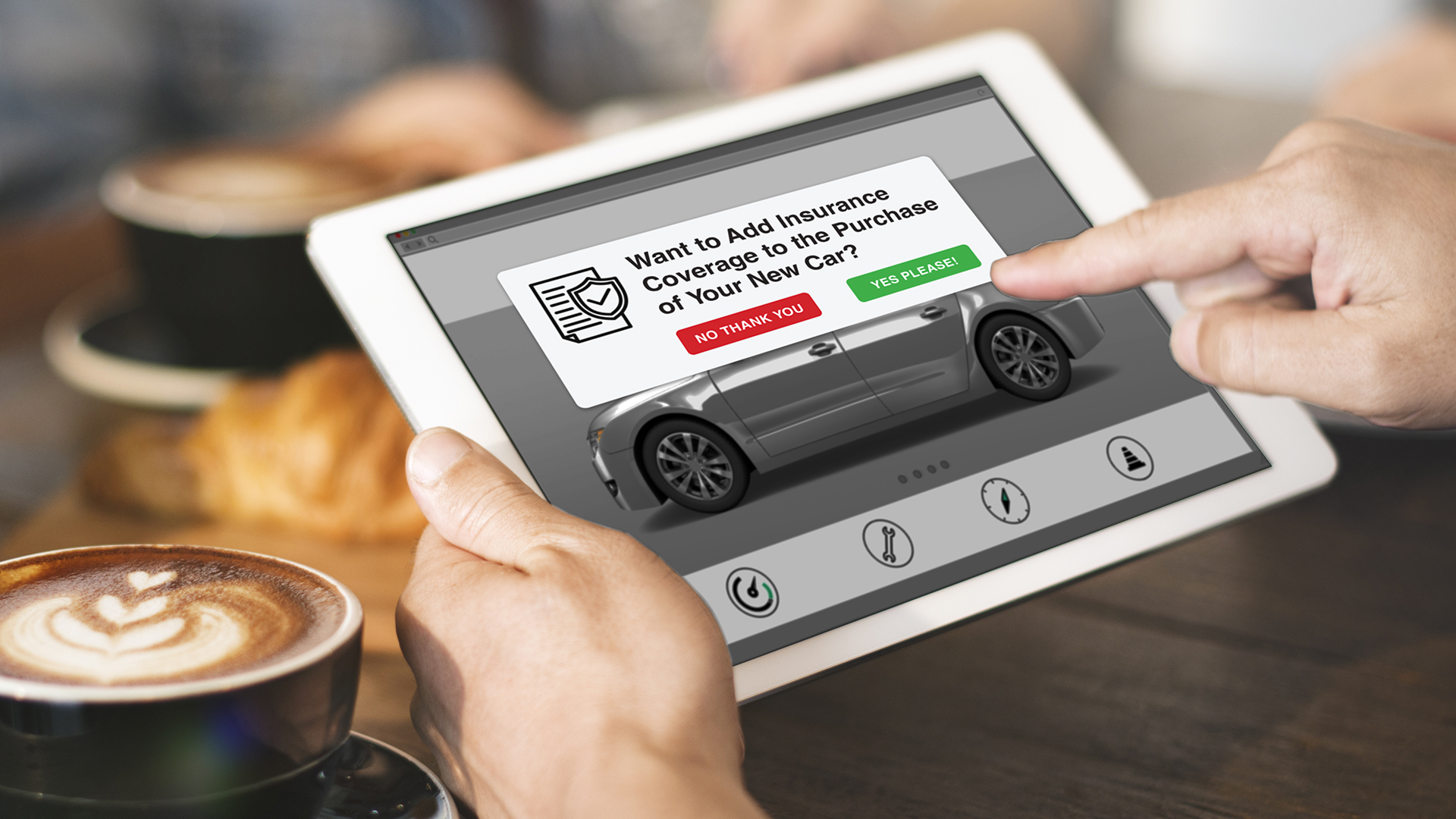Embedded insurance isn’t just shaping into a significant driver for growth in P&C insurance. It could be the single biggest determining factor between the industry’s leaders and also-rans in the decade ahead.
“Insurers are going to need to find a way to rethink their traditional approaches to distribution,” says Ernst & Young Partner Bob Reveal, adding that embedded insurance is “a growing and significant threat to the existing book of business” for carriers that aren’t ready for it.
To understand why, let’s start with the basics: Embedded insurance is coverage that’s bundled as a native feature with third-party products and services at the point of purchase. It’s the Apple warranty for your iPhone, auto coverage for that flashy new Ford F-150, or the liability coverage offered by Airbnb to short-term rental hosts.
The concept is hardly new, of course. But innovations in cloud-based technologies and the massive shift to digital channels fueled by the pandemic have turned embedded insurance into a game-changer.
Instech London projects that global revenues from embedded insurance will reach $722 billion by 2030—six times their size today. In the U.S., embedded insurance revenues could top $70.7 billon as early as 2025, up from just $5 billion in 2020. McKinsey estimates that up to 25% of personal-line premiums could be generated through embedded ecosystems by decade’s end. For auto, that percentage could exceed 30% or more.
Yet as lofty as these projections sound, they may be low-balling it. Here are just a few of the reasons embedded insurance could redefine the competitive landscape faster and more profoundly than many realize.
Embedded: More Reach, Better Conversion
Enabled through modern, cloud-connected insurance platforms and open APIs, embedded insurance gives carriers access to whole new customer pools by weaving their offerings directly into the purchase of consumer products at the exact moment customers are most likely to buy coverage.
For brands and retailers, offering insurance at the point of sale provides added value to customers while generating incremental revenue. For insurers, it represents an especially efficient distribution model when compared to the roughly 20% of revenue they spend on broker commissions and marketing costs.
It’s also a boon to those that matter most: customers. Purchasing coverage separately from the product or service being insured can be complicated, expensive, and quite frankly, irksome. According to JD Powers’ 2022 U.S. Insurance Digital Experience Study, customer satisfaction with carriers’ online options for purchasing insurance dropped 16% in the past year, with only 45% ever even bothering to use these options as part of the shopping process. It’s no wonder the protection gap stands at $1.4 trillion—double what it was 20 years ago—according to Swiss Re.
Now embed the purchase of insurance within the fast, frictionless customer experience perfected by digital-first brands like Amazon, Apple, Virgin, or Zappos. Suddenly, the underwriting process can be dramatically simplified by leveraging the same personal data customers already entered as part of the original purchase—increasing the chances these prospects become policyholders.
Fitted, Flexible—With Higher Lifetime Value
Embedded insurance isn’t just a new distribution channel for some kind of one-size-fits-all coverage, either. Advances in data analytics and integration mean it’s possible to instantly and accurately assess and price risk in order to provide truly personalized coverage—as well as create and market-test compelling new coverage options.
According to a recent survey, 64% of Gen Xers and 69% of Millennials report particular interest in purchasing embedded insurance with flexible cancellation and automated, trigger-based claims options. Think travel, ticketing and events, banking, and fintech services, for instance. The same survey found consumers are willing to pay as much as 15% more for such offerings—and 68% say they’d switch providers for the privilege.
Data from embedded channels enables underwriters and product managers to rapidly deploy new innovations, price them based on real-time demand, modify features, and ditch those that prove unpopular. Just as importantly, if not more so: Embedded coverage is just the start of the conversation.
Once they acquire customers through embedded channels, insurers can forge deeper relationships by cross-selling other valuable products and services to win and grow premium and enhance customer lifetime value. Just look at Farmers’ digital insurance brand Toggle and Toyota. While compelling in itself, embedded insurance is also a gateway for multi-lining its policyholders with auto, home, renters, recreational vehicle coverage, and more.
Winning With the Right Approach
The combined upfront and downstream opportunities mean the bottom line for embedded insurance may be bigger than we think.
Yes, some major retail brands are seeking to bypass carrier partners altogether (looking at you, Tesla). But insurance is exceedingly complex and requires the depth and breadth of regulatory expertise, data, security, and service only a carrier can provide. And with rival insurers racing to lock up the most lucrative retail partners, time is of the essence for carriers looking to get in the game.
To see an example of how a modern insurance platform enables insurers to rapidly fuel growth with embedded insurance for categories like Travel and Pet, watch my recent industry keynote on the topic. Because as distribution becomes destiny, insurers that make the most of it will be the biggest winners of all.



